#flower aztec
Explore tagged Tumblr posts
Text

AZTEC ASTROLOGY
- 6 - (the flower/xochitl)
aztec astrology is an old form of astrology dating back to 600 BC. this type of astrology has 20 different signs rather than 12. it originates from an ancient tribe, the aztecs, who were particularly fond of astronomy
flower dates: january 6/18/30, february 4/16/28/29, march 12/24, april 5/17/29, may 11/23, june 4/16/28, july 10/22, august 3/15/27, september 8/20, october 2/14/26, november 7/19, december 1/13/25

traits of flower/xochitl:
• associated with venus
• they have a natural beauty similar to how venus in the 1st house people do. the girls tend to be prettier though in my personal opinion
• one of the most artistically talented aztec signs
• flowers know how to have fun and are fun to be around
• they loveee love and being in relationships
• very good at socializing but are usually a bit shy and introverted at the same time
• flowers are extremely sensitive but they won’t show it they will hide it and expect you to know why
• they get bored easily sometimes
• they’re extremely intuitive and often have a lot of dreams that tell them things
• flowers need lots of love and care from their friends, partners, and family otherwise they’ll think that you hate them
• they will not stay dating someone who’s boring
• flowers can be passive aggressive at times







#aztec astrology#flower aztec astrology#flower aztec#flower#xochitl#astrology#astrology blog#astrology chart#birth chart#astrology community#astro community
77 notes
·
View notes
Text


Sensual.
Spring is here.
In my garden
68 notes
·
View notes
Text

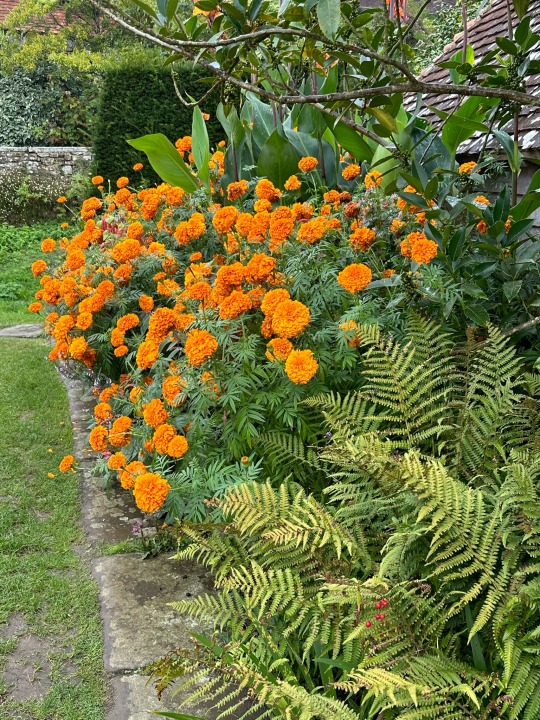
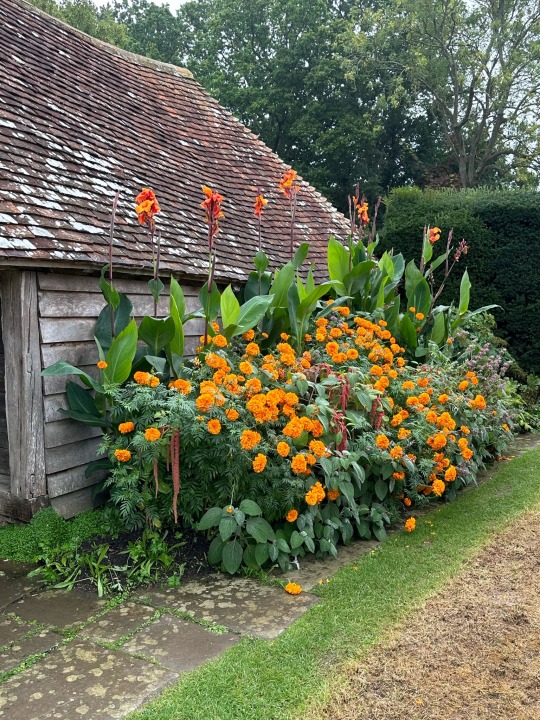
Plant of the Day
Monday 18 September 2023
These giant marigolds, Tagetes erecta ‘Giant Orange’ (African marigold, American marigold, Aztec marigold), were making a bold autumn display alongside one of the barns at Great Dixter, East Sussex.
Jill Raggett
#tagetes#African marigold#American marigold#Aztec marigold#orange flowers#annual#annuals#plants#horticulture#gardens#garden#Great Dixter#east sussex
369 notes
·
View notes
Text


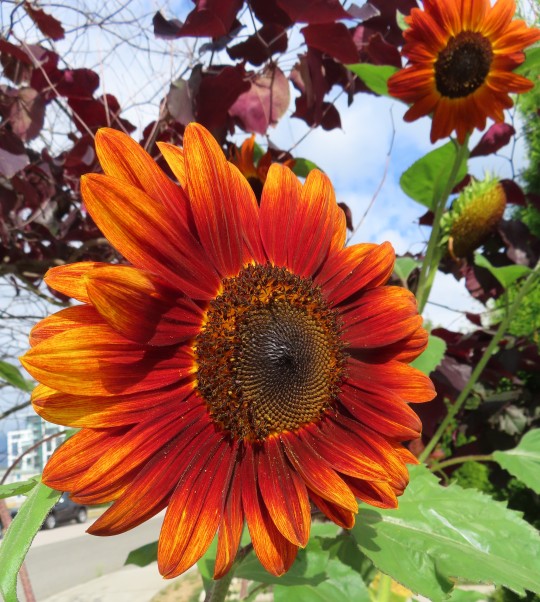
Helianthus annuus (sunflower)
Sunflowers were first domesticated in the southeastern US about five thousand years ago. A thousand years later they were being grown as a food crop from South America to southern Canada. Many indigenous peoples used the sunflower as a symbol of the solar deity. The Aztecs in Mexico and the Incas in Peru often represented sunflowers as stone motifs in their temples.
Sunflowers arrived in Europe in 1510 and they were an instant sensation. Nowadays Russia and the Ukraine are the largest producers of sunflowers in the world, grown mostly for cooking oil. However as per usual, plant breeders have produced umpteen cultivars and the Royal Horticultural Society has given the Award of Garden Merit to no less than 46 different varieties of sunflowers.
These particular sunflowers are a horse of a different color. They seem to challenge my concept of what a sunflower should look like. After all, isn't a sunflower supposed to be yellow? You know, like the sun.
174 notes
·
View notes
Text
the story of Chimalexochitl
I want to share this story because it resonated deeply with me when I heard it while listening to Fifth Sun (free on Audible!), a book that tells our history as it should be told: from the writings of our ancestors themselves (some dating as far back as 1612, as the grandchildren of the warriors who fought cortes realized they must find a way to preserve their history), not the perspective of the conquistadors. luckily, as I did not want to share this story told any differently than this version, I was easily able to find the exact section from Fifth Sun that tells this story on lithub.
please check it out - it's really good!!!
#mine#personal#nahua#mexica#Chimalexochitl#Chimalxochitl#Shield Flower#indigenous history#aztec mythology#radblr#indigenous reconstructionism
20 notes
·
View notes
Text

"My name is Death, and the end is here"
Mictlantecuhtli and my OC Meztli.
#mictlantecuhtli#meztli#Xibalba#maya#mesoamerica#mayan#mesoamerican#flowers of xibalba#mesoamerican mythology#mayan mythology#original art#original character#aztec mythology
109 notes
·
View notes
Text
What Exactly Is Sannyo Smoking?

Well of course it sucks Mamizou, don't you remember what she said it's made of?
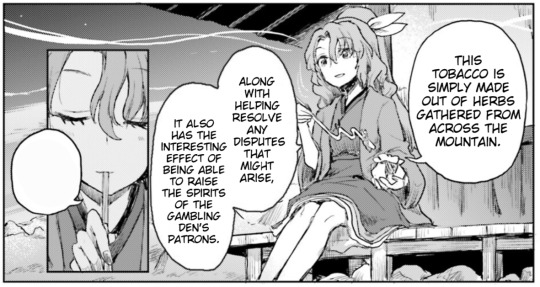
Now, an herb you can smoke that can grow on a mountain. The first, most obvious, initial guess would be marijuana. It's a weed after all, it can grow basically anywhere. Plus, let us be honest, it would be a little funny.
marijuana can definitely grow on mountains, it even grows on mountains in Central Asia
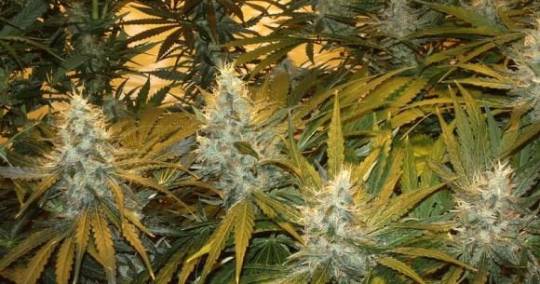
Plus, it is apparently spreading over northern Japan right now as a weed. They used to grow it for hemp material, not to smoke, it would probably not do much, but that wouldn't stop Sannyo if she wanted to give it a shot.
(Except I'm deliberately teasing)
There is a very, very obvious reason why it's not marijuana.
Marijuana has no nicotine, even though you can smoke it, it's not by any stretch of the imagination "tobacco"
Even if we imagine a world where this is the only thing Sannyo ever smoked, Mamizou smoked it with her and just said it was bad tobacco, not to mention Mamizou has recently been to the outside world and would probably know weed in seconds. (Which, although hypothetical, would have made for a hilarious Mamizou thought bubble)
We are looking for "tobacco" after all, we need nicotine, not just anything you can smoke, but it's a weed and a popular joke, so I obviously had to tease.

I could go through every variant of wild Nicotiana, tobacco was even imported to Japan by Portuguese sailors in 1542, and it's cultivation was legalized in 1625. The Hakurei barrier was formed in 1885, that's actually plenty of time for actual wild tobacco to spread.
But it might not work either.
While we might find some enthusiastic and previously cultivated tobacco growing as a weed that spread up to the mountains, it's not going to be unique enough. It'll be growing all over the place by the time it gets up a mountain. And the village would be smoking that exact same thing.
But most importantly, it's no fun.
Truth be told, there is a genus of Nicotiana that would work well in mountains, furthermore, Portugal actually had some at the time as an import from the Americas. But thats no fun, so I'll just return to this later when I inevitably run out of exotic options.
After all, if its tobacco made from "herbs" it would boarder on cheating to just use nicotiana, regardless of the form it ends up in.
Thankfully, there are other herbs and weeds beyond nicotiana that actually have nicotine, it really would be worthwhile check one of those.
And I've got a fun one. A whole family in fact.
Just above the Genus: "Nicotiana" is the Tribe: "Nicotianeae" and above that we find the family Solanaceae.
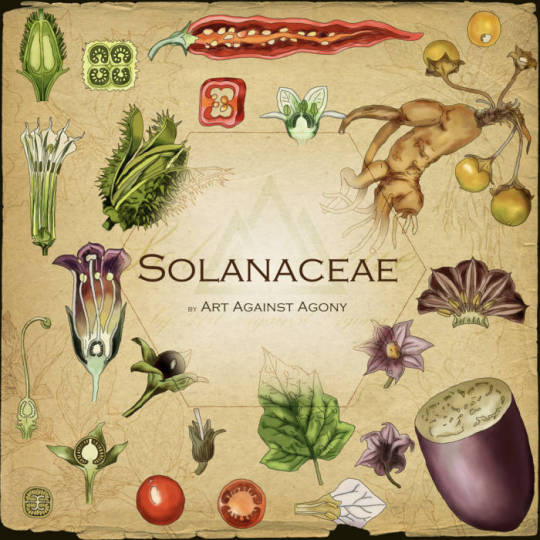
The Solanaceae, also known as the potato or deadly nightshade family
Nicotine is a naturally produced alkaloid in the nightshade family of plants
It contains everything from eggplants and other vegetables to the infamous Deadly Nightshade. (Atropa belladonna)
And of course, like I said, further down the family, it even has nicotiana itself. All of them contain nicotine to some greater or lesser extent. (Yes, hilariously even eggplants, a little bit)
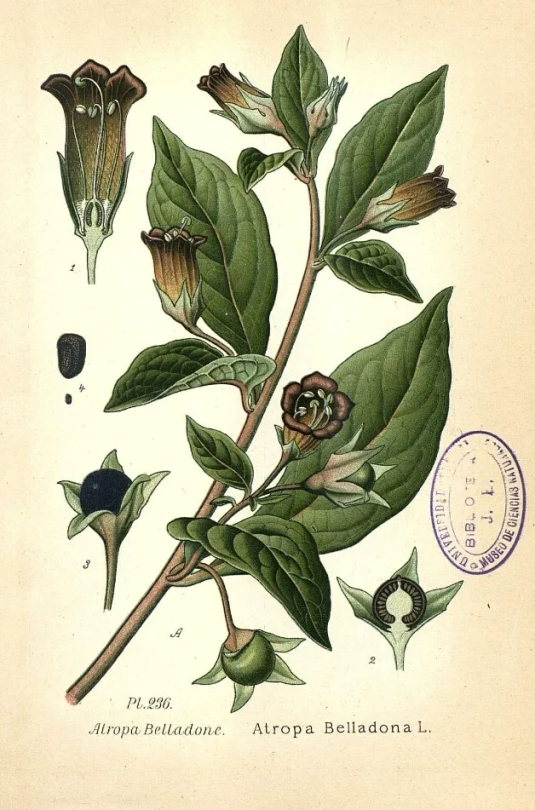
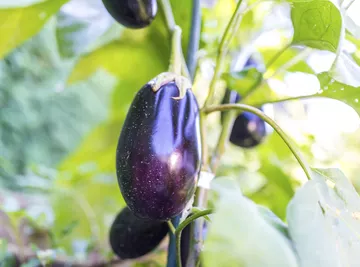
Solanaceae consists of about 98 genera and some 2,700 species. They grow naturally in more parts of the world than wild Nicotiana.
But we are just going to be looking through the nightshade variations, maybe some fruit, but no potatoes today. And these are coveniently famous for their narcotic effects.
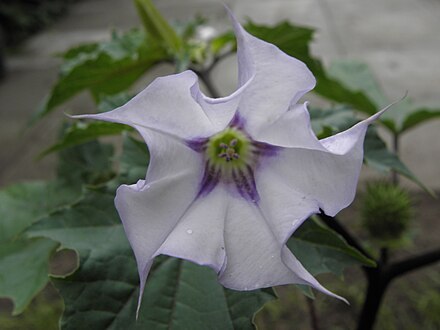

And some varieties, such as the Datura stramonium (occasionally called the Devil's Trumpet) had its leaves smoked in pipes and cigarettes, so much they were traded by the East India Company in the 18th century. And since it was popular for traditional medicine, some people might have even planted it.
But that type is not native to Japan, so it's got the same problem as the nicotiana. Not to mention, even though its an invasive weed, and can survive a little below the freezing point, in its current state, it probably doesn't like mountains. It probably wouldn't last a full winter on one.
This might be definite enough to just say it can be some hypothetical, wild, non specific variation of nightshade with the right combination of alkaloids and nicotine and presumably, relatively non deadly in the form Sannyo uses it.
Or maybe it is just better adapted to mountains form of imported of the Datura stramonium I just mentioned. I doubt even if it spread like a weed, that anyone but Sannyo would bother to figure out you can smoke that type of plant as tobacco.
But we are mostly just having fun at this point.
I doubt we could possibly think Zun cared up to this point, and definitely not beyond this point, we are just doing a fun overanalysis after all. Zun almost always seems to go for extinct species anyway, so it wouldn't be fun to follow that train of thought regardless..
[But if we just want a probable canonical answer Zun thought up. He might have just meant some non specific extinct variation of nightshade, since if there is at least one native version then that's enough to claim there could have once been others,
Besides, it's even possible zun just imagined she could possibly even mix her favorite flowers somehow, which while she probably could not, it would definitely be cute. ]
But we are going to take this further anyway to see if we can find something real and possible that currently exists today.
The simplest thing to think of native to Japan is just Japanese belladonna (Zun's proof of concept for an imaginary extinct nightshade if he really wanted a hypothetical one)

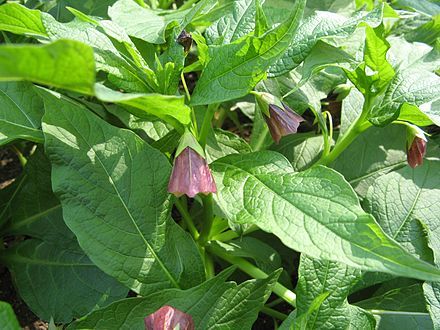
Scopolia japonica, also called Japanese belladonna. It's about as dangerous as the name implies. If eaten by mistake it can cause hallucinations. And while it no doubt contains at least some nicotine, it also contains the alkaloids Scopolamine
And more hilariously Hyoscyamine, known for helping the colon or bladder...
yes, you can use this extract to help you poop or pee if you want too.
Which is even funnier than the marijuana joke i made earlier.
And the only other species in the Scopolia genus is pretty similar and in Korea.
So we'll want to find something different.
But we are trapped. We only have imports left.
And the Datura genus we'd likely want is stuck in the Americas so we can only really consider a variety that came from those possible 18th century imports of Datura stramonium.


They are pretty perfect, tbh, spread widely to the Old World early where it has also become naturalized, and since it was already a weed that could endure dry climate and fairly cold environments. It could probably spread up a mountain.
They are our best bet for something you can smoke for recreation, with nicotine, outside the nicotiana genus that only Sannyo would use. If smoked people used its properties for recreation but you can also use it for anesthesia. Inject it's primary ingredient Atropine and you can use it for all sorts of weird stuff. (Though I pretty much resigned myself to having Atropine in the plant the moment I decided to run up and down the nightshade family).
Though in truth, she's probably just smoking wild tobacco that has lost a lot of flavor while struggling to adapt the mountain. So I'll move on to the most likely answer.
Portugal's more early tobacco is Nicotiana rustica, also called Aztec tobacco.

It is pretty tough and would probably adapt to a mountain pretty well.
I'd like to think it's the Datura stramonium since it's cooler and weird though.
In overview:
The simplest, best answer is just wild imported Aztec tobacco (Nicotiana rustica) from Portugal. Which had trade with Japan open up extremely early. Its honestly perfect for this

Followed by the more provocative option of Devil's Trumpet (Datura stramonium) imported later in the 18th century.

and the funny option. The only one actually native to Japan
Japanese belladonna (Scopolia japonica)

But it's almost definitely just that Aztec tobacco. (Nicotiana rustica)

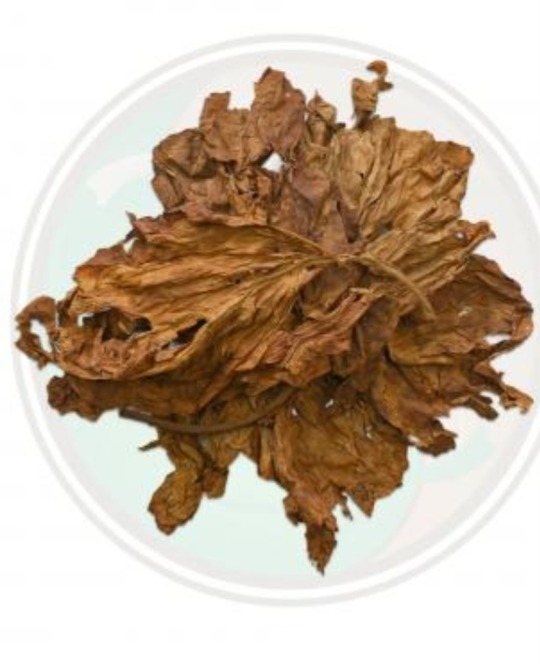
We could just imagine she mixes flowers or herbs into it to validate her "herbs" comment if we want (which again, would be cute)
#sannyo komakusa#touhou project#Flowers#Smoking#This took me collectively more than 16 hours#I had a ton of fun up until the point I realized Japan had like only one native option and was basically stuck with imports completely.#lotus eaters#It's probably just the Aztec tobacco but I felt obligated to run through looking for native nightshade#I'll need to make a short version later.#It's funny that I've imagined a world Sannyo would give smoking almost anything she comes across a shot if nicotine is involved.#mamizou futatsuiwa
34 notes
·
View notes
Text

Xochipilli blep
Digital portrait of Xochipilli, the flower prince, from @warlordofnoodles webseries, No Evil!.
#xochipilli#aztec gods#artists on tumblr#art#artwork#cute#fantasy#fanart#digital art#aztec#aztec mythology#aztec culture#xochiquetzal#illustration#krita#Ixtlilton#digital#drawing#sketching#drawings#no evil#no evil betsy lee#betsy lee#flowers#fauna#nature#the flower prince#natural world#magic#magical
11 notes
·
View notes
Text

Poinsettias adorn the Zocalo, the main square in modern Mexico City. Indigenous to Mexico and Central America, the plant became a symbol of Christmas with a little help from European missionaries and an American diplomat named Joel Poinsett. Photograph By Carrie Thompson, Alamy Stock Photo
How The Rugged Poinsettia became Our Favorite Holiday Flower
Long before a clever marketer turned it into a Christmas staple, the Aztec and Maya celebrated the colorful shrub for its medicinal value.
— By Bill Newcott | Published: December 22, 2022
Think “Poinsettia” and you think “Christmas,” right? Well, think again. At the time of the first Christmas, the closest poinsettia to the little town of Bethlehem was 8,000 miles away, clinging to life in a rocky canyon in what’s now southwestern Mexico.
“The Aztec called the plant cuetlaxochitl (brilliant flower), and the Maya referred to it as k’alul wits (ember flower),” says Mark Hoddle of the University of California Riverside’s department of entomology. He became fascinated with the poinsettia while working on his doctoral dissertation in the 1990s, exploring ways to control whiteflies, a common scourge of the holiday plants.
There’s evidence the indigenous peoples of Central America appreciated the plant for its seasonal red leaves, he says, but mostly they saw medicinal value.
“When you break a leaf or branch of a poinsettia, it leaks a milky white sap,” Hoddle says. “The cultures believed that sap had healing properties.” Aztecs applied the sap to the breasts of nursing mothers to increase milk production. They also used the sap as a depilatory.
Even today, Hoddle says, descendants of the ancient Maya in Mexico boil the leaves to create a remedy for obstetrical or gynecological hemorrhaging. And if you happen to be bitten by a snake, the locals say, there’s nothing better than boiled root of k’alul wits.

The poinsettia is named in honor of Joel Roberts Poinsett, an American diplomat and avid amateur botanist who introduced the plant to the United States in the 1820s. Library of Congress
The First Christmas Poinsettias
Franciscan missionaries arrived in Mexico in the 16th century and eventually began setting up elaborate manger scenes at Christmastime. Holly, Europe’s holiday flora of choice, was nowhere to be found for the dioramas, but when the missionaries saw the red and green colors of this local plant—that happened to burst into color every December—they knew they had the perfect stand-in.
By the time an American diplomat named Joel Poinsett arrived in Mexico in the 1820s, those bright leaves were a common sight in local churches at Christmastime. A swashbuckling U.S. congressman from Charleston, South Carolina, Poinsett spoke six languages, dined with Russia’s czar, served President James Madison as a covert agent to protect U.S. business interests in South America, and somewhere along the way became, for a short time, a general in the Chilean army.
Yet despite all his exploits, Poinsett is remembered primarily as the amateur botanist who became fascinated with those red and green plants from Mexico. He sent some home to Charleston, where people began growing them in their gardens. Their notoriety grew under a variation of Poinsett’s name.
Poinsettias Become A Christmas Star
For the first 100 years or so after those first transplants arrived in Charleston, fragile poinsettias were nearly impossible to keep alive in a pot. They were sold primarily as cut flowers.
“That all changed with these guys,” says Fred Clarke, keeper of what’s likely the world’s only poinsettia library. He’s leading me toward a large, translucent white shed tucked into a corner of the Flower Fields at Carlsbad Ranch, a bit north of San Diego, California.
Each spring Carlsbad’s famous Flower Fields become a fantasia of red, yellow, and white ranunculus flowers. Clarke is the horticulturalist in charge of making sure those 80 million flowers grow and get to market, but it’s clear his passion plant grows inside this shed.
“Here we are!” he enthuses as we step inside. Sitting on a series of low, tiered risers are scores of potted poinsettias arranged chronologically in order of their historical development.
Clarke doesn’t have a sample of Joel Poinsett’s iteration, but his chronology does include a close relative: the legendary St. Louis Red. The first mass-produced poinsettia, it was introduced in 1924 by Louis Bordet of Missouri.
Long-stemmed and fragile, the St. Louis Red was still primarily a cut flower. But a self-taught Southern California agriculturalist named Paul Ecke started toying with the Red’s genetics, breeding varieties that exploded with multiple colored leaves, didn’t mind growing in a greenhouse, and, most importantly, could be shipped in pots.
Following the lead of those long-ago missionaries, Ecke began marketing poinsettias as “The Christmas Flower.” He convinced Hollywood to use them as decorations on seasonal TV specials. (Ecke’s son personally saw to it that Johnny Carson had an extravagant display behind his Tonight Show desk each year.)
For decades, the Ecke family grew nearly all their poinsettias on what’s now Carlsbad’s Flower Fields. Today, poinsettias are grown primarily outside the U.S., so the Ecke family focuses on developing and patenting new varieties. The results are on proud display in Clarke’s poinsettia library.
Ushering me through the collection, Clarke—who started working with the Ecke family 42 years ago—ticks off the subsequent varieties. They include the Flaming Sphere (1950), a floppy version that never caught on. The C-1 (1968) was the first poinsettia that could withstand the rigors of transport. The Limo (1988) introduced the deep red of present-day poinsettias. Freedom Family (1991) was the first with rounded, elephant-ear-shaped bracts rather than long, pointy ones. And the Prestige (2002), known for its rich color and stamina, is now the most popular poinsettia on the planet.
After touring the poinsettia library, Clarke invites me to enjoy one of the Flower Fields’ famous strawberry milkshakes. As we head for a small stand, he suddenly stops and turns back toward the shed and his red-leafed congregation. He smiles.
“These guys have come a long way,” he says.
3 notes
·
View notes
Video
Primrose Bloom by James Marvin Phelps Via Flickr: Primrose Bloom Valley of Fire Nevada April 2023
#nevada#valley of fire#red rocks#aztec sandstone#geology#mojave desert#landscape photography#spring bloom#nature#outdoors#flowers#primrose#spring#james marvin phelps photography#flickr
45 notes
·
View notes
Text

Sprekelia formosissima / Aztec Lily at the Sarah P. Duke Gardens at Duke University in Durham, NC
#Sprekelia formosissima#Sprekelia#Amaryllis formosissima#Amaryllis#amaryllidaceae#Aztec Lily#Lily#Plants#Flowers#Nature photography#photography#photographers on tumblr#Sarah P. Duke Gardens#Duke Gardens#Duke University#Durham#Durham NC#North Carolina#🌺🌻
5 notes
·
View notes
Text

🌥⛰🌺🏛🪶📿💀🐶
#Louise Goalby#Day#Mountains#Field#Meadow#Flowers#Plants#Nature#Temple#Mayan#Aztec#Feather Headdress#Paint#Skull#Amulet#Dog#Spirit Animal#Totem Animal#Power Animal#Magical Creatures#Mystical Creatures#Supernatural Creatures#Magic#Magical#Mystical#Supernatural#Art#App#Adult Coloring Book#Paint By Number
21 notes
·
View notes
Text


More sneak peeks from Flower Wars
2 notes
·
View notes
Text

Las Cruces (Aztec Skull Carving)
Mixed Media Portrait
Wax Crayon and Acrylic Ink
Description: A skull carved with flowers and vines hanging on 3 crosses on a field of flowers under a starry partly cloudy sky.
Inspiration: The place I grew up was named after a mass grave from a battle no one remembers. I love skulls and flowers nearly as much as the Aztec. I draw them a lot. This one again using red and blues.
#guadalupe medina art#lupe art#las cruces#new mexico#mixed media#wax crayons#acrylic ink#skull#flowers#artists on tumblr#aztec#queer artists#nonbinary artist#autistic artist#chicano artist#portrait#illustration
2 notes
·
View notes
Text




Red Tulips, Puerto Rican Hibiscus (Flor de Maga), Magnolias, Aztec Marigold (Tagetes erecta)
What's everyone's favourite flowers that aren't like. The normal ones. Like everyone's a fan of roses and sunflowers what's a more niche one. One you don't get in gift sets. Mine's sweet peas
#I love a lot of others but these are the main ones#flor de maga#puerto Rican hibiscus#Aztec marigold#Mexican marigold#the flowers of my people#I also love what red tulips mean in Victorian flower language#magnolias are just neat
54K notes
·
View notes
